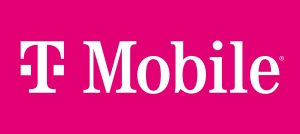What is 5G?
5G is quickly becoming the standard in wireless networking. It was first deployed in 2019 but now covers huge swaths of the country. Expansion started in cities, but has grown to include suburbs and agricultural areas. The network is still backed up by 4G (in cities and rural areas alike), but where 5G is available, top speeds can exceed 1,000Mbps.
5G works seamlessly with 4G to provide everything from voice to video calls and streaming in ultra high definition. 5G also provides the backbone for a new kind of home internet, one that’s surprisingly fast, more reliable than satellite, and simple to set up.
5G wireless vs. 5G home internet: What’s the difference?
Before we go into more detail, it’s important to make a distinction between these two ways 5G can be used.
5G wireless networks are for devices like cell phones and hotspots, giving customers mobile data through a phone plan from a cellular provider.
5G home internet uses the same networks to give you internet access in your home. A 5G gateway picks up signals from a nearby cell tower and provides internet for your wired and wireless devices.
Popular 5G wireless providers
| Provider | Starting single-line price | Order online |
|---|---|---|
| $65/per line per mo.* | ||

| $50/mo. 1 line w/ AutoPay† | |
| $65.99/mo. per line§ |
Data as of 08/25/2025. Availability and speed may vary by location, and prices are subject to change. See disclaimers.
Today’s wireless plans give you 5G coverage when it’s available, but divert you to 4G LTE when it’s not or when you don’t need all the bandwidth 5G offers.

Still unclear about what makes 5G different from 4G?
Take a look at our 4G vs. 5G guide to see how they compare in pricing, availability, and speed.
To sum it up: 5G is a form of wireless networking, just like 4G, only faster and with much higher data capacity.
Cheapest 5G home internet providers
| Provider | Download speed | Starting price | Order online |
|---|---|---|---|
|
| Up to 300Mbps | $50/mo.* w/Auto Pay | View Plans for Verizon Home Internet |

| 133–415Mbps | $50/mo.† w/ AutoPay, plus taxes & fees. | View Plans for T-Mobile Home Internet |
| 90–300Mbps | $60/mo.§ |
Data as of 08/25/2025. Availability and speed may vary by location, and prices are subject to change. See disclaimers.
Although 5G mostly impacts mobile phones, some providers also use 5G networks to provide home internet service.
5G home internet is more affordable and faster than the internet you’d get on a 5G cell phone or hotspot. The best 5G home internet plans come with the following:
- Speeds up to 1,000Mbps
- Prices of $60 per month or less
- No extra charges for equipment or installation
- No annual contracts
Verizon, T-Mobile, and AT&T offer 5G home internet. In addition, you may be able to get 5G home internet through an MVNO.

Pro tip:
Want to know more about how 5G works as a whole? Take a look at our full 5G guide.
Benefits of 5G networking
![]() Benefits:
Benefits:
- Extremely fast speeds
- Lower chance of network congestion
- Affordable prices on home internet
Why we love 5G (and you should, too)
Extremely fast speeds: The biggest advantage of 5G for everyday customers is its speed. Downloads start at 40Mbps and sometimes exceed 1,000Mbps, blowing past 4G’s average of 30Mbps. C-band and mmWave speeds up the ante, offering 5G speeds that are even faster in some areas.
Lower chance of network congestion: 5G networks use radio bands that previously weren’t widely available for commercial use, so there are a ton more airwaves available to carry your data than before. This makes 5G especially useful in crowded areas like sports stadiums and music festivals.
Affordable prices on home internet: The increased speed and capacity of 5G make it possible for cellular companies to provide full-service home Wi-Fi. Whereas before wireless internet had strict data caps and high prices, now you can get services like Verizon 5G Home Internet, which gives customers unlimited data and excellent speeds at a reasonable price.
How does 5G home internet compare to other types of internet?
| Internet connection type | Download speeds | Geographic reach* | View all providers |
|---|---|---|---|
| 5G fixed wireless | 300–1,000Mbps | 65% | View Providers |
| Cable | 15–1,000Mbps | 82% | View Providers |
| Fiber | 100–5,000Mbps | 49% | View Providers |
| DSL | 1–100Mbps | 40% | View Providers |
| Satellite | 1–100Mbps | 100% | View Providers |
* Percentages taken from the Federal Communications Commission’s internet availability data.
5G internet is competitive with fiber and cable internet when it comes to speed and price. It gets you download speeds in the range of 300–1,000 Mbps for around $50 per month. And that’s a flat fee (before taxes), so you won’t have to worry about extra costs for equipment or installation.
The drawback with 5G home internet is that your speeds will be less consistent than with a wired internet type like fiber or cable. 5G internet runs on excess capacity on local cell towers, so your service depends both on congestion and the distance between your 5G router and the nearest 5G transmitter.
How 5G wireless and 5G internet work
5G is a form of wireless network technology. Like 4G, it relies on radio frequencies and cell towers to deliver internet data to homes and mobile devices. But 5G incorporates new networking techniques and a much wider spectrum of radio bands to boost speeds and increase capacity.
Tools like massive MIMO and beamforming allow 5G to deliver faster, targeted cellular signals to customers. Small-cell transmitters—basically smaller versions of cell towers—propagate mmWave radio signals, which can deliver data to your phone at gigabit-plus speeds. Cellular carriers have also started using software-based networking architecture to make their 5G networks more flexible. The ultimate goal is to use 5G for many more functions, including robots, automated factories, and self-driving cars.
Rather than being a hard-and-fast service, 5G is more of a general concept and suite of wireless technologies. 5G networks come in different types, deliver different speeds, and can be used in different ways, like with 5G for mobile and 5G home internet.
FAQ about 5G wireless and home internet
How does 5G home internet work?
What is a 5G base station?
What’s the difference between 4G and 5G?
Does 5G have better latency than 4G?
Is 5G better than 4G?
How much faster is 5G over 4G?
Why is 5G faster than 4G?
Disclaimers
5G wireless plans
* Verizon Wireless
- With paper-free billing and Auto Pay. Plus taxes & fees.
† T-Mobile Wireless
- for 1 phone line + taxes and fees. AutoPay discount using an eligible payment method applied.
§ AT&T Wireless
- 5G coverage not available everywhere. Requires compatible device/service. Other terms and restr’s apply. Data charges may apply.
5G home internet plans
* Verizon Home Internet
- Price per month with Auto Pay & without select 5G mobile plans. Consumer data usage is subject to the usage restrictions set forth in Verizon’s terms of service; visit: https://www.verizon.com/support/customer-agreement/ for more information about 5G Home and LTE Home Internet or https://www.verizon.com/about/terms-conditions/verizon-customer-agreement for Fios internet.
† T-Mobile 5G Home Internet
- Guarantee exclusions like taxes and fees apply.
§ AT&T Air
- Includes $5 off with AutoPay and Paperless Bill